#nature whales discoveries
Photo

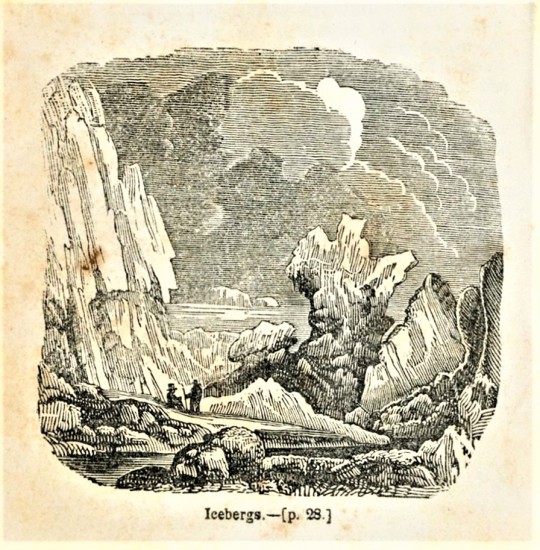
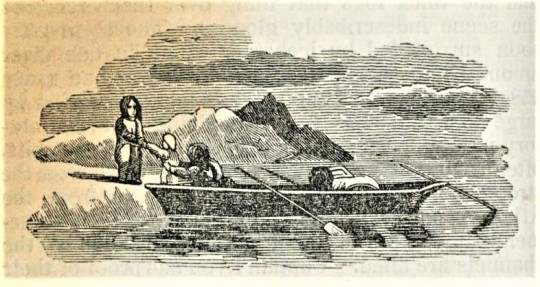

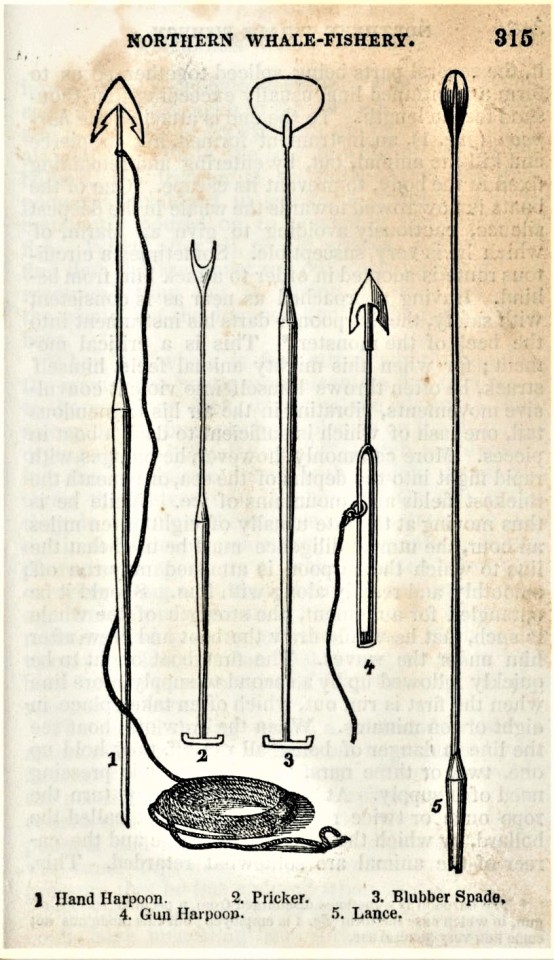

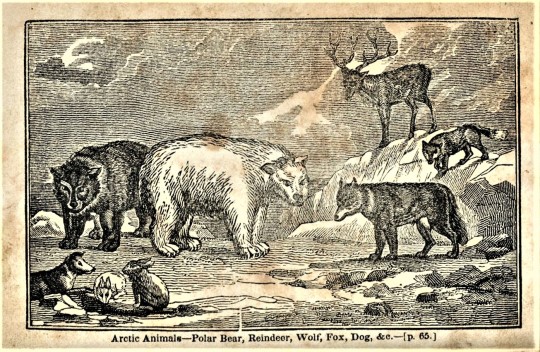
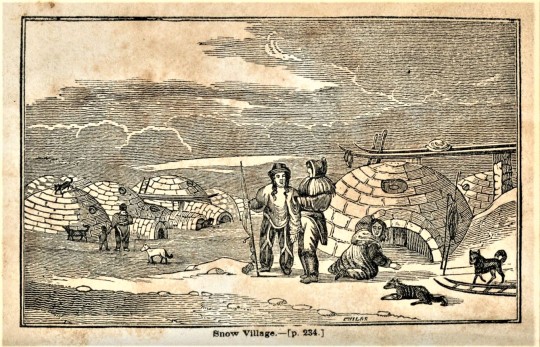
Science Saturday
This Saturday we present engravings from the 1836 Harper’s Stereotype Edition of Narrative of Discovery and Adventure in the Polar Seas and Regions: with Illustrations of Their Climate, Geology, and Natural History; and an Account of the Whale-Fishery. First published in 1830 by Oliver & Boyd (Edinburgh) and Simpkin & Marshall (London), the book was the first installment in the Edinburgh Cabinet Library, a publication series focusing on geographical works that ran from 1830 until 1844 under the editorship of Dionysius Lardner. The first American edition was published in New York by J. & J. Harper in 1831. Our 1836 copy was published a few years after J. & J. Harper’s 1833 name change to Harper & Brothers.
The esteemed Scottish mathematician and physicist Sir John Leslie authored the first chapter (”The Climate of the Polar Regions”), geologist Robert Jameson provided a chapter on artic geology, and the remainder of the text was authored by Hugh Murray. Murray would go on to contribute to seven of the thirty-eight books in the Edinburgh Cabinet Library series. Unfortunately, there is no attribution for the wood engravings, so there is no one to thank for the delightfully bizarre rendering of marine life hanging out on land in “Whale with its Cub, Narwal, &c.” or the gathering of predator and prey depicted in “Arctic Animals” (images 7 & 8 above).
Find more Science Saturday posts here.
-Olivia, Special Collections Graduate Intern
#Science Saturday#Discovery and Adventure in the Polar Seas and Regions#Edinburgh Cabinet Library#Harper & Brothers#Sir John Leslie#Robert Jameson#Hugh Murray#Dionysius Larder#Whaling#The Arctic#Natural History#Engravings#wood engravings#vintage illustration#scientific illustration#Polar Exploration#olivia
78 notes
·
View notes
Note
i enjoy reading your works a lot (i've read all your dc work!) and i think what strikes me most is that there's always hope in them. even in the most angsty ones, there's still a love and hope for humans/family/life in them and i really appreciate that :)
hi anon! this ask has sat around for a lifetime because i missed the notification somehow, and haven't looked at my inbox in a Good Long While. thank you for your very kind words! by nature i'm actually hideously maudlin and prone to being sad, damp, and catastrophising. to counteract this, i try my absolute best to forcibly see the good in every situation, and i do this in my real life, so i gotta do it when i write too!
things can get so so rough for no good reason, and we gotta endure because how can we do anything else? but if we gotta endure, we can endure it with as much love and care and hope as we can muster, so that things are hopefully less rough for at least one other fucker. it's my life's philosophy, and i'm glad that you've enjoyed this aspect of my fics <3
#whale writing#this is me shouting into the void on account of this being#uhm#really really REALLY out of date but nevertheless#i'm fr a glum person by nature but i'm figuring out how to be kinder and happier#and on god i'm taking u with me on this journey of discovery#(of how to be better to myself and to the people around me)
3 notes
·
View notes
Note
Hello! I just wanted to write to thank you.
One of my favorite lines I've ever read is “Jim was already familiar with the incessant activity of that cool, curious mind as it tirelessly hunted answers. But now he saw where the activity came from - Spock’s utter certainty that there was no higher purpose for his life than to burn it away in search of truth, and to give that truth away when he found it. More, Jim saw what fueled and underlay that certainty: a profound vulnerability paired with a great, unreasonable joy”. That, combined with the YW series (which I recently reread), is very good for my soul.
You and your work are truly an inspiration to me! That Wounded Sky quote resonated with me for the theme that joy and curiosity really can underpin an entire, happy, successful life. Young Wizards has so much of the same - books and libraries are magic, but so is nature, and space, and manmade machines, and whales and sharks. Your stories strike a balance I can't always put into words - that curiosity and joy can be self-sustaining. They are not dependent on a single field, a single datum, a single discovery. They can be a lens and a philosophy and they can fit in your pocket for everyday. Curiosity as a mindset, and an exercise in loving and engaging with the world; joy as a result of realizing how many exciting things there are to love and be curious about.
On a parallel note, I am fascinated by how you seem to blend fantasy and sci fi - your Star Trek feels loving and magical, and your fantasy feels grounded and tangible. I am in awe of how many things you've been a part of creating, because it gives me hope that I, too, might avoid having to pick a narrow niche. But in the meantime, I am so grateful to be able to escape into your books, because I fall in love with them again every time, and then I come back and fall back in love with life.
I’m glad to hear it! Thanks for letting me know. ☺️
Also: generally, I think niches are best left to statues. Create what works for you and makes you happy. Life’s too short to waste doing otherwise.
146 notes
·
View notes
Text
While blue whales are sleek, fast-swimming divers, Perucetus was a very different beast. The researchers suspect that it drifted lazily through shallow coastal waters like a mammoth manatee, propelling its sausage-like body with a paddle-shaped tail.
“This is a weird and stupendous fossil, for sure,” said Nicholas Pyenson, a paleontologist at the Smithsonian National Museum of Natural History, who was not involved in the study. “It’s clear from this discovery that there are so many other ways of being a whale that we have not yet discovered.”
The head of Perucetus would have adaptations for whichever way of life it pursued. “I would love to see the skull of this guy,” Dr. Thewissen said.
excerpts from the NYT article about the Perucetus colossus by Carl Zimmer
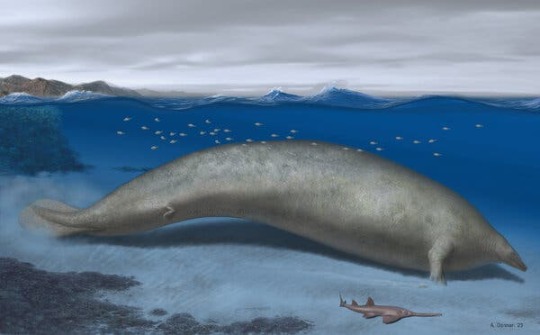
(illustration by Alberto Gennari, 2023)
#SO MANY OTHER WAYS OF BEING A WHALE#PROPELLING ITS SAUSAGE-LIKE BODY WITH A PADDLE-SHAPED TAIL#I WOULD LOVE TO SEE THE SKULL OF THIS GUY#basilosauridae#basilosaurid#perucetus#perucetus colossus#paleoblr
173 notes
·
View notes
Note
Bestie I need to know what answers corresponded to Dan or Phil
oh my gosh I’d love to share :)) take the quiz before reading below the cut!!!!! also take this as the performance art it is, I’m not genuinely assuming very specific things about dan and phil’s internal worlds lol
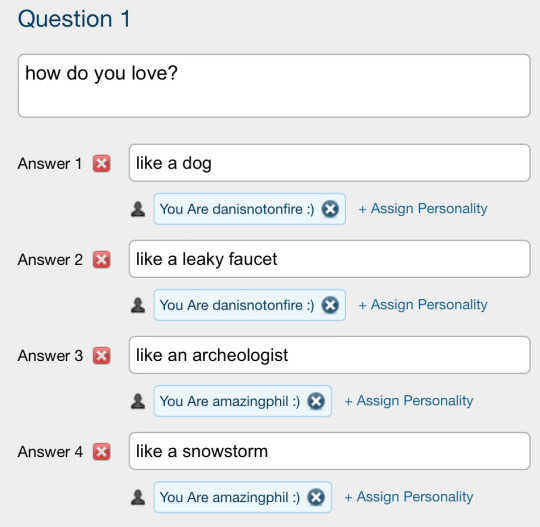
for Dan: love like a dog as in loyal, eager to provide a service, full blown adoration. love like a leaky faucet as in always present even when the sink is “off”. but also as in sporadic, unexpected, unavailable. (this is not a dig at dan, that is the option I would choose)
for Phil: love like an archaeologist as in dedicated to craft of discovery, careful, curious. love like a snowstorm as in all encompassing, obscuring, hungry
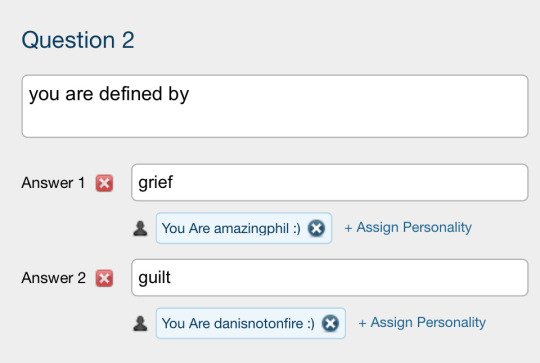
for Dan: Catholic guilt yeah, but also thinking on the past in a “I wish I had done it different way”
for Phil: mmmmmmmmmmmmmm. among other things his commitment to nostalgia is a type of grief.
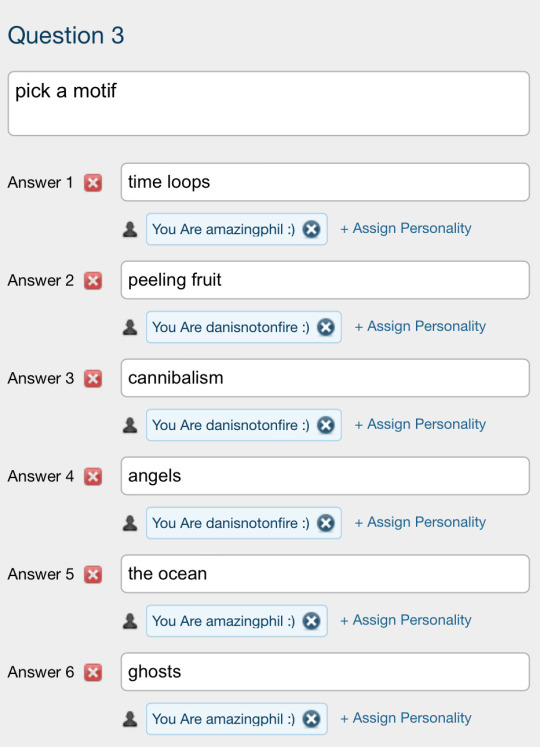
for Dan: peeling fruit as an act of service has big dan energy. he would pass tiktok clementine theory. cannabalism bc i think he’d enjoy himself on yellowjackets Hannibal hunger as love tumblr. angels is his for a lot of reasons. I was thinking about angels as machinery, which meshes with his clean brutalism aesthetic. also angels as fallen from grace, as a subversive queer symbol
for Phil: time loops, we are back to the grief and nostalgia. but I’m also appealing to his brand of creativity here. glitch theory, fantasticalism. ghosts….. we are back to grief, but also his understanding of horror. the ocean is something I associate with phil a lot for some reason. I think it’s the mystery of it

for Dan: he’s a teddy bear, he’s so soft. he has his childhood teddy still. glowing globes for mystery, matches the aesthetic of the moon room. kiss me lollipop…… must I say more
for Phil: I was so captivated by him going “I think that’s what god looks like” in relation to the golf with friends structure. so, for phil, interesting lines and lights that evoke a feeling of reverence <3 icy stag bc I associate him with snow and the fantastical. surreal spotlight sky… I can’t explain it just is
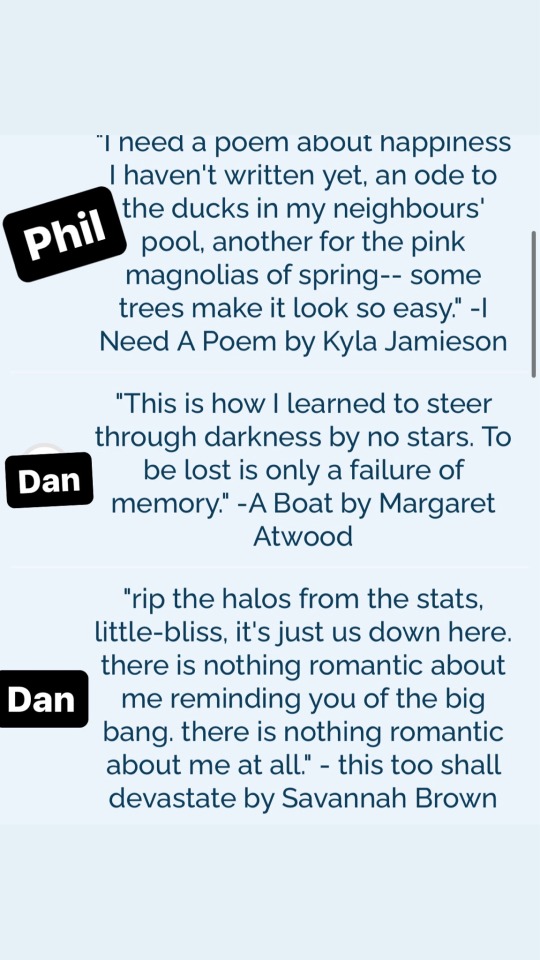
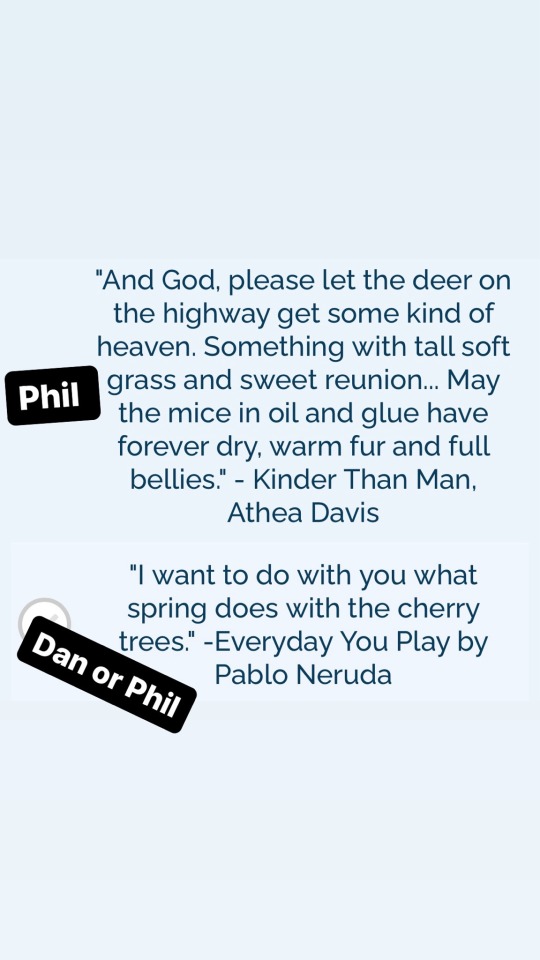
for Dan: A Boat is a poem to me about navigating depression, I think dan would love it. Dan is SO this too shall devastate coded, I don’t think I need to explain.
for Phil: the Kyla Jamieson poem for a few reasons. Love of the natural world, but also I think it carries a sense of creative frustration? The Athena Davis poem because of how gentle it is. meditations on death, meditations on kindness
Dan and Phil: this is the only option on the quiz that gives points to both outcomes…. I want to do with you what spring does with cherry trees. That’s so them
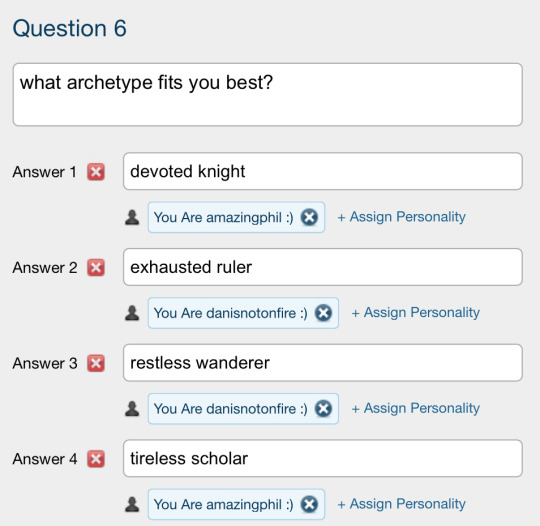
I actually think these kinda speak for themselves
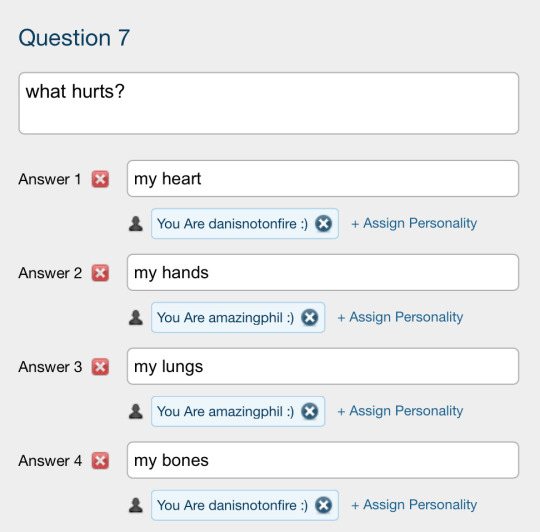
for Dan: he’s such a sensitive soul, which is why he got the heart hurt option. he puts so much of his heart into everything, so this is an acknowledgment of him not being as cerebral as he thinks. for the bones, an ache in my bones is one of the ways I visualize my depression. a bone deep heaviness
for Phil: hurt in your hands because of hands as a symbol for creativity. to me this meant an itch to create. hurt in your lungs I can really only justify by vibes. the hurt of running too hard maybe? Of a body meant to house you doing a bad job of it?
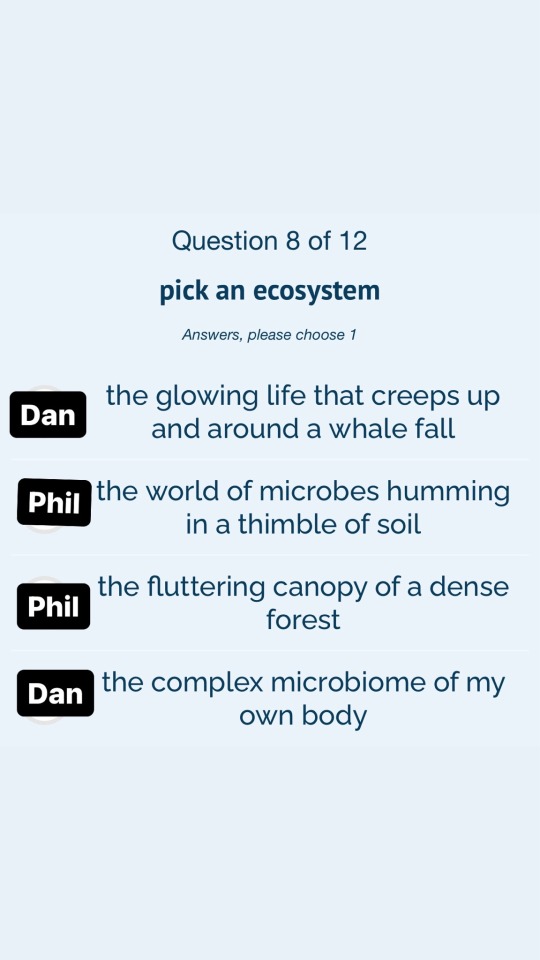
for Dan: mmm realizing I said I associate phil with the ocean which is true, but I associate Dan with whale falls. that’s all I got for that lol. for the microbiome, I love love love the human microbiome, it’s fascinating. I think dan would have a heck of a time with the idea that we’re mostly made up of non self organisms
for Phil: beauty in the small things and beauty in natural system we’re not at all a part of. nod to his love of birds, love you Steve
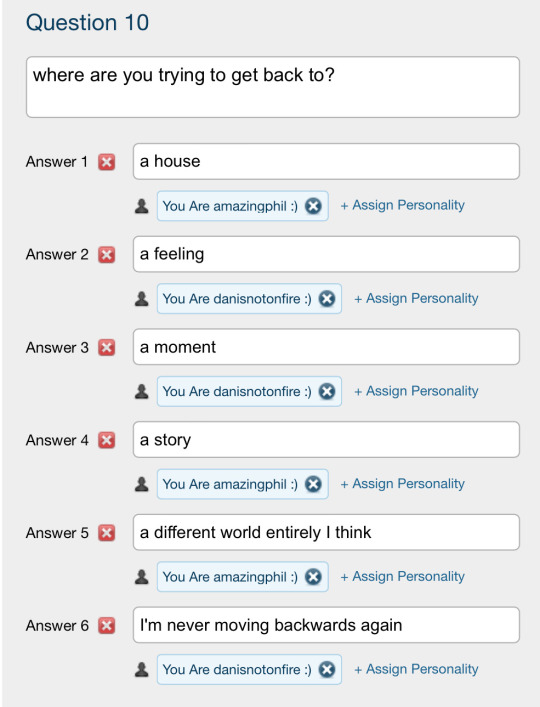
these are mostly all vibes, except for Phil’s sense of otherworldliness and Dan’s commitment to forward growth
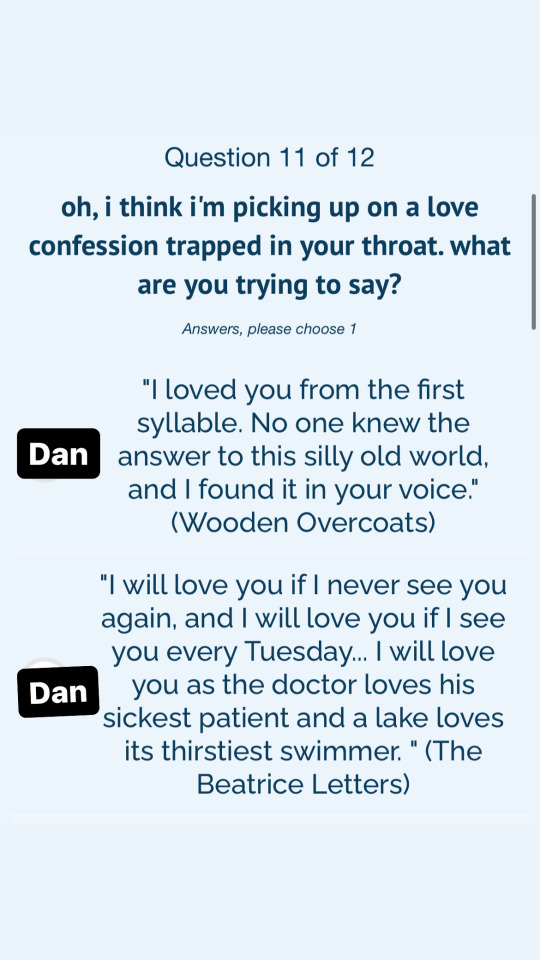

for Dan: the wooden overcoats quote…… sorry not get 2009 on you. The Beatrice letters quote is a little bit “it’s awful work” “not to me, not if it’s you”. as a doctor loves his sickest patient for real
for Phil: the Mabel quote is a little bit about love as a creative I think, and a private creative at that. The love exists even if you destroy the art. the locked tomb quote, they are so dependent. he dyed his shoes green
#asks#it’s like a gag quiz but I’m also unwell about them and thought about it A Lot so#phan#Dan and phil#amazingphil#daniel howell#robin 📢#absolutely normal uquiz
35 notes
·
View notes
Photo

Listening to the tree of life
By Karen Bakker
Listening to nature is an ancient art. But for most of human history, our ability to listen to other species was constrained. Humans are unable to hear many of the myriad sounds made by other species. Bats are some of the most talkative creatures in the animal kingdom, but their ultrasonic cries are largely above human hearing range. Elephants and whales are some of the loudest creatures on Earth, but their low frequency infrasonic calls are inaudible to the naked human ear.
Discoveries of non-human sound in the 20th century were controversial. The scientists who discovered bat, elephant, and honeybee vocalizations were by turns laughed at, sworn at, shaken by the lapels at conferences, and deprived of funding. Many of their colleagues held to the view that most creatures neither made nor heard sound. As it turns out, however, Western scientists were the ones that were hard of hearing.
Using digital devices no larger than a smartphone, scientists are now eavesdropping on Earth, from the Arctic to the Amazon. Digital listening networks are being installed, some the size of a small pond, others stretching across entire oceans. These recording devices listen discreetly and continuously, even at night, across the full range of sonic frequencies and in places that are difficult for humans to reach. The recordings confirm that the natural world is alive with sounds made by animals, insects, and even plants.
By using artificial intelligence to analyze the tsunami of bioacoustics data now being generated, scientists are learning some remarkable things. Entirely new species have been discovered; in the depths of the Indian Ocean, a new population of blue whales previously unknown to science was revealed by its unique songs. Species previously thought to have gone extinct have been heard, giving hope to conservationists; a camera can only spot animals walking down the path, but a digital recorder hears them hiding in the bushes.
Scientists have also begun to use digital technologies to decode non-human vocal communication. Deciphering individual bat sounds from the cacophony of a cave is impossible for a human listener but relatively easy for a trained artificial intelligence algorithm. Using digital bioacoustics, researchers have found an expanding list of species that refer to one another with individual names (dolphins, belugas, and bats). Some species also use specific referential signals, just like humans use words. Elephants have specific vocal signals for “honeybee” and “human”, and their vocalizations are so nuanced that specific signals are used to differentiate between threatening hunters and non-threatening passersby. Turtles utter unique vocal signals at the moment before they hatch, which scientists believe are used to coordinate the mass births for which they are famous. These findings lend weight to long-debated, controversial claims about the existence of language in non-human species.
Even more astonishing, scientists have demonstrated that species without any apparent means of hearing are also responsive to sound. Coral and fish larvae navigate across miles of open ocean to healthy reefs and show a preference for their home reefs. Although scientists do not yet know how, these tiny creatures imprint on the sonic signature of their natal reef at the moment of their birth, like a marine lullaby.
Other experiments demonstrate that some plants make infrasonic sounds at frequencies audible to insects and bats. In one fascinating experiment, flowers increased their production of nectar when exposed to the sound of buzzing bees, flooding themselves with sweetness as if in anticipation. In another experiment, plant seedlings grew their roots towards the sound of running water, even though no moisture gradient was present.
Non-humans communicate complex information through sound. Does this mean that, one day, humans may perhaps converse with other species? Digital technologies may provide an answer to the question. Scientists are now using artificial intelligence to attempt to break the barrier of interspecies communication. One team is building a dictionary in East African Elephant. Two other teams are working on Sperm Whalish. Google Translate does not feature Western Australian Dolphin yet, but perhaps one day it will.
Like many digital innovations, this research is generating controversy. While digital bioacousticians often work with citizen scientists via crowdsourcing apps, Big Tech companies are also involved in acoustic data harvesting. Large audio datasets of non-humans are useful for testing natural language processing algorithms, but this often occurs without the usual ethics protocols applied to human data. A related issue is data ownership. Who owns the data, particularly on Indigenous traditional territories on which environmental data is often gathered without consent? Indigenous data sovereignty is now being asserted around the world, shifting our understanding of environmental data rights, privacy, and ownership.
Applications of bioacoustics are also of concern. Conservationists laud the innovative use of bioacoustics to measure ecosystem health, monitor endangered species, and even protect national parks by detecting and fending off poachers. But others warn of the dangers of eco-surveillance capitalism, which poses a risk of human bycatch; as scientists build global listening networks for environmental purposes, will they also eavesdrop on human conversations? And some innovators are attempting to use our newfound knowledge to command and even domesticate previously wild species. Will bioacoustics create a new frontier for the accumulation of nature, mediated by digital technologies?
As humanity is awakening to the resonant mysteries of non-human sound, we are simultaneously becoming aware of an unsuspected threat. The catastrophic impacts of noise pollution on living organisms—particularly in aquatic environments—has been demonstrated by a spate of studies in recent years. Whales and dolphins, birds and bats suffer from mechanical and industrial noise, which reduces their ability to feed and navigate, communicate and mate. Even species like shrimp and seagrass are affected. This should be unsurprising, given the well-recognized impacts of noise on human health: increased stress, cardiovascular risks, even dementia. The growing cacophony of noise pollution is emerging as our era’s greatest unrecognized menace to human and environmental health. The silver lining is that it is easy to reduce noise pollution, and the impacts are positive, significant, and immediate.
What will digital bioacoustics teach us? Its implications are both practical and philosophical. We can use digital bioacoustics to protect non-human species from harm, but we can also connect with non-humans in new ways. As we begin listening anew across the Tree of Life, we are realizing that our fellow non-humans have more to say to us than we have previously suspected. This challenges deep-rooted assumptions about complex communication in non-humans, our definition of language, and the relationship between humans and our fellow Earthlings.
Karen Bakker is a professor at the University of British Columbia, and earned her PhD from the University of Oxford as a Rhodes Scholar. She is the recipient of numerous awards, including an Annenberg Fellowship (Stanford University), a Guggenheim Fellowship, and a Radcliffe Fellowship (Harvard University). An avid gardener and the mother of two daughters, she lives in Vancouver.
305 notes
·
View notes
Text
Merfolk!Viktor x Reader 06
i decided not to link the past parts of this series. i don’t want like a million links on my post.
so!
all parts of this series are tagged under cryptid!viktor :)
cryptid!viktor also includes my pieces with vampire!viktor
also take all this scientific stuff with a grain of salt. i have actually no idea what i’m doing.

“magnificent! absolutely stunning!” the onsight doctor (veterinarian) gasps as she marvels at the ct scan in front of her. it showed a detailed scan of viktor’s inner organs and body. the merman was still heavily sedated, floating motionless in an upright glass tube of water with a machine buzzing around him, taking said ct scans for you to stare at.
if they hadn’t tortured the poor merman so, you would’ve found it fascinating.
part of you still did.
so you watched on, watching as assistants performed test after test with an anesthesiologist monitoring viktor’s vitals.
which probably didn’t matter because no one had any idea what normal vital signs for him were.
“what’s magnificent and oh so stunning?” you comment dryly, and the doctor points to what looks like a set of lungs. but they looked almost alien.
“the lungs! It looks like there’s a resonating chamber. think like a whale using vibrations to make its calls and noises throughout its skull. except instead of its entire skull, this creature uses only its lungs! it also has a larynx, much like a whale, so i’d imagine it makes similar noises. if only i could dissect the thing!”
“absolutely not.” you snap, and the doctor holds up her hands in defense.
“mr. leroy was very insistent that the specimen not be harmed. don’t worry, i won’t break that promise.” you pointedly ignored the whole “specimen” comment. though it did make you wonder. were they going to experiment on him?
testing went on for hours. during that time, countless discoveries were made. viktor was likely an omnivore, though leaning toward carnivore with those shark-like teeth of his. and while his bottom half was indeed fish (likely sturgeon like you had first guessed), he was distinctly mammal, much like whales or dolphins.
did all merfolk have those kinds of teeth?
did they all make the same noise?
were they all mammalian? or were some more fish-like than dolphin-like?
you had so many questions.
hours after viktor had been released into his enclosure, you snuck back into the testing lab with a swipe of your badge. while it would log that you had entered the premises after closing, you couldn’t help but be curious about what they had discovered.
you logged into the computer and typed in marcus’s access code—he had given it to you when he couldn’t be bothered with paperwork—and clicked on the file labeled “experiment neptunus.”
it pulled up hundreds of documents, and you were promptly overwhelmed.
so you clicked on the first file and found something interesting.
something very interesting.
it was a picture. but not of viktor.
instead, it was of another merfolk, with her human half looking about seventeen years old with long blue hair and her fish half looking long, black, and whiplike. she was unconscious, eyes closed and mouth hanging open slightly to show teeth even more wickedly sharp than viktor’s.
what fish was she?
you scrolled down and saw some classifications.
EXPERIMENT NEPTUNUS SPECIMEN #01 CLASSIFICATION:
KINGDOM: Animalia
PHYLUM: Chordata
CLASS: Mammalia
ORDER: Caudata
FAMILY: Hominidae
GENUS: Oceanus
SPECIES: Homo Oceanus
since when had there been another mer in this aquarium? you had only seen viktor and had even seen maps of the place, so you knew there weren’t any other enclosures unless they were underground.
was this mermaid a deep sea fish?
did she not require light like viktor likely did?
scrolling down some more, you found some notes.
“tests have shown that the fish-like bottom half is that of a pacific black dragonfish. the specimen is exceptionally aggressive, as such is the nature of the fish. it will be transported to another oceanarium where it can be monitored further.”
so there was more merfolk out there. and silco did know about them already.
just what was he planning?
#viktor arcane x reader#viktor arcane x you#viktor arcane x y/n#arcane viktor x reader#arcane viktor x you#arcane viktor x y/n#arcane viktor#viktor arcane#viktor x reader#viktor x you#viktor x y/n#arcane x reader#arcane#arcane league of legends#arcane: league of legends#cryptid!viktor#fairy writes
96 notes
·
View notes
Text
Deep dives into folklore: Sea monsters
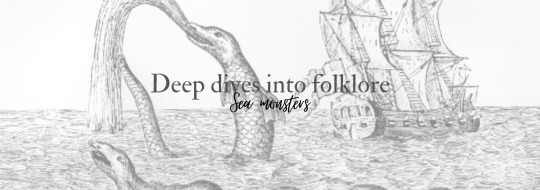
The vast and mysterious expanses of the world's oceans have long captured the human imagination. Throughout history, sailors and storytellers have shared tales of monstrous creatures lurking beneath the waves. These sea monsters, both mythical and literary, have evolved over time, reflecting the changing beliefs, fears, and knowledge of the societies that created them. This week we explore the fascinating evolution of sea monsters in literature and mythology, from their ancient origins to their modern interpretations.
The concept of sea monsters dates back to some of the earliest civilizations, such as the Sumerians and ancient Egyptians. In their mythologies, these cultures often depicted sea serpents and other monstrous beings as guardians of the underworld or as symbols of chaos and destruction. One of the earliest recorded sea monsters is the Babylonian dragon-god Tiamat, a primeval chaos monster who embodied the sea.
In Greek mythology, the sea monster Scylla, with her multiple heads and writhing tentacles, was feared by sailors who navigated the Strait of Messina. Scylla represented the dangers of the sea, as well as the unpredictable and uncontrollable forces of nature that ancient seafarers had to contend with.
During the Middle Ages and Renaissance, sea monsters took on a more symbolic and allegorical role in literature and art. The medieval bestiaries, encyclopedic collections of animal descriptions, often included fantastical sea creatures with moral lessons attached to them. These creatures were seen as manifestations of sin, temptation, and the unknown.
One of the most famous sea monsters of this period was the Kraken, a colossal cephalopod said to terrorize sailors off the coast of Norway. The Kraken embodied the fear of the deep sea and the dangers that awaited those who ventured too far from shore. It was also a metaphor for the vast, uncharted territories of the ocean.
The Age of Exploration in the 16th and 17th centuries brought about a new wave of sea monster lore. As European sailors ventured into uncharted waters, their accounts of strange and terrifying creatures fueled the imaginations of writers and readers alike. These tales often blended fact with fiction, as sailors encountered real but unfamiliar marine life, such as giant squids, which contributed to the mythos of sea monsters.
One of the most famous literary sea monsters is Captain Ahab's nemesis, Moby Dick, from Herman Melville's novel of the same name. Although Moby Dick is a sperm whale rather than a mythical creature, the obsessive pursuit of this massive white whale symbolized humanity's struggle against nature and the perils of obsession.
In the modern era, our understanding of the ocean and its inhabitants has deepened through scientific discovery. As a result, sea monsters have evolved from mythical creatures to fascinating, real-life creatures with unique adaptations. For instance, the colossal squid, with its enormous eyes and powerful tentacles, has captured the imagination of both scientists and the public.
While ancient sea monsters were often depicted as malevolent beings, modern interpretations are more nuanced. In literature and popular culture, sea monsters have become multifaceted characters, sometimes serving as protectors of the ocean's fragile ecosystems or representing the unknown wonders of the deep.
The evolution of sea monsters in literature and mythology reflects the ever-changing relationship between humans and the ocean. From ancient civilizations' fears of chaotic sea serpents to the allegorical monsters of the Middle Ages and the real-life marvels of the modern era, sea monsters have served as symbols of the human imagination and our evolving understanding of the natural world. As our knowledge of the ocean continues to expand, so too will our interpretations of the creatures that inhabit its depths, ensuring that sea monsters will continue to captivate our minds and inspire our stories for generations to come.
Taglist:
@axl-ul @crow-flower @thoughts-fromthevoid @alderwoodbooks @harleyacoincidence
Reply/reblog to be added
#writeblr#writers of tumblr#bookish#writing#booklr#fantasy books#creative writing#book blog#ya fantasy books#ya books#deep dives into folklore#folklore#books#literature#sea monsters#kraken#loch ness monster#moby dick#20000 leagues under the sea
40 notes
·
View notes
Text
youtube
COLOSSAL ANCIENT WHALE COULD BE THE HEAVIEST ANIMAL EVER!
Perucetus colossus, an ancient whale that swam off the coast of present-day Peru 39 million years ago, rivals the blue whale as the heaviest animal ever. A blue whale can weigh up to 100-190 tonnes, but the newly described extinct marine mammal weighed between 85 and 340 tonnes, estimate palaeontologists in a study published in the journal Nature.
‘The discovery pushes extreme growth in whales to a much earlier phase in their evolution than previously thought’, says paleontologist and co-author Olivier Lambert from the Royal Belgian Institute of Natural Sciences.
Read more on our website: www.naturalsciences.be
35 notes
·
View notes
Text
Peruvian fossil challenges blue whales for size
3 August 2023

By Jonathan Amos, Science correspondent
Scientists have identified a new candidate for the heaviest ever animal on Planet Earth.
It's an ancient, long-extinct whale that would have tipped the scales at close to 200 tonnes.
Only some of the very biggest blue whale specimens might have rivalled its heft, researchers say.
The creature's fossilised bones were dug up in the desert in southern Peru, so it has been given the name Perucetus colossus.
Dating of the sediments around the remains suggests it lived about 39 million years ago.
"The fossils were actually discovered 13 years ago, but their size and shape meant it took three years just to get them to Lima (the capital of Peru), where they've been studied ever since," said Dr Eli Amson, a co-worker on the discovery team led by palaeontologist Dr Mario Urbina.

Eighteen bones were recovered from the marine mammal - an early type of whale known as a basilosaurid.
These included 13 vertebrae, four ribs and part of a hip bone.
But even given these fragmentary elements and their age, scientists were still able to decipher a huge amount about the creature.
In particular, it's evident the bones were extremely dense, caused by a process known as osteosclerosis in which inner cavities are filled.
The bones were also oversized, in the sense they had extra growth on their exterior surfaces - something called pachyostosis.
These weren't features of disease, the team said, but rather adaptations that would have given this large whale the necessary buoyancy control when foraging in shallow waters.
Similar bone features are seen for example in modern-day manatees, or sea cows, which also inhabit coastal zones in certain parts of the world.
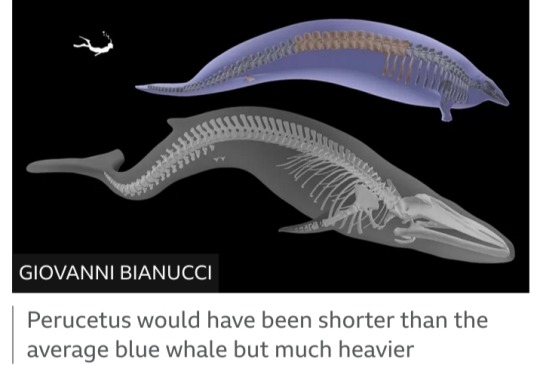
"Each vertebra weighs over 100kg, which is just completely mind-blowing," said co-worker Dr Rebecca Bennion from the Royal Belgian Institute of Natural Sciences in Brussels.
"It took several men to shift them out into the middle of the floor in the museum for me to do some 3D scanning.
The team that drilled into the centre of some of these vertebrae to work out the bone density - the bone was so dense, it broke the drill on the first attempt."
When confronted with a skeleton of a long-extinct species, scientists use models to try to reconstruct the body shape and mass of the animal.
They do this based on what they know about the biology of comparable living creatures.
It is predicted Perucetus would have been about 17-20m in length, which is not exceptional.
But its bone mass alone would have been somewhere between 5.3 and 7.6 tonnes.
And by the time you add in organs, muscle and blubber, it could have weighed - depending on the assumptions - anywhere between 85 tonnes and 320 tonnes.

Dr Amson, a curator at Germany's State Museum of Natural History Stuttgart, uses a median number of 180.
The largest blue whales recorded during the era of commercial exploitation were at this scale.
"What we like to say is that Perucetus is in the same ball park as the blue whale," he told BBC News.
"But there's no reason to think that our individual was particularly big or small; it was likely just part of the general population.
So it's worth keeping in mind that when we use the median estimate, it's already at the very upper ranges of what blue whales can measure."

One of the comparators used by the research team in its investigations is a blue whale that will be very familiar to anyone who has visited the Natural History Museum in London.
Nicknamed Hope, this animal's skeleton took pride of place at the institution when it was hung from the ceiling in the main hall in 2017.
But before being installed, the skeleton was scanned and described in great detail and is now an important data resource for scientists across the world.
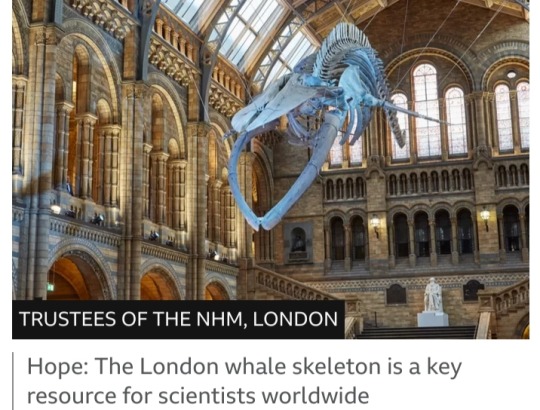
In life, Perucetus' skeletal mass would have been two to three times that of Hope, even though the London mammal was a good five metres longer.
Richard Sabin, the curator of marine mammals at the NHM, is thrilled by the new find and would love to bring some aspect of it to London for display.
"We took the time to digitise Hope - to measure not just the weight of the bones but their shape as well, and our whale has now become something of a touchstone for people," he said.
"We don't get hung up on labels - like 'which was the largest specimen?' - because we know science at some point will always come along with new data.
What's amazing about Perucetus is that it demonstrated so much mass some 30 million-plus years ago when we thought gigantism occurred in whales only 4.5 million years ago."
Perucetus colossus is reported in the journal Nature.
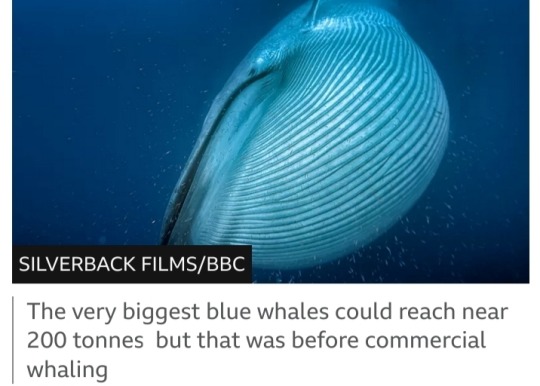
#Perucetus colossus#Perucetus#Peru#fossils#palaeontology#whale#basilosaurid#osteosclerosis#pachyostosis#Royal Belgian Institute of Natural Sciences#long-extinct species#State Museum of Natural History Stuttgart#blue whale#Natural History Museum#Hope#Peruvian fossil
23 notes
·
View notes
Text
South Georgia Museum


Museum in Grytviken, South Georgia and the South Sandwich Islands

Bronze portrait bust of Sir Ernest Shackleton (by the sculptor Anthony Smith) at the South Georgia Museum, Grytviken, South Georgia. Unveiled in November 2017.
Ernest Henry Shackleton CVO OBE FRGS FRSGS (15 February 1874 – 5 January 1922) was an Anglo-Irish Antarctic explorer who led three British expeditions to the Antarctic. He was one of the principal figures of the period known as the Heroic Age of Antarctic Exploration.
The South Georgia Museum is situated in Grytviken, near the administrative centre of the UK overseas territory of South Georgia and the South Sandwich Islands. Polar explorers Ernest Shackleton and Frank Wild are buried in Grytviken's graveyard. The museum was established in 1991 by Nigel Bonner.
The South Georgia Museum opened in 1992 as a specialised whaling museum, subsequently expanding its expositions to include all aspects of the discovery of the island, sealing industry, whaling, maritime and natural history, as well as the 1982 Falklands war.
Address: PF9R+WXM, Grytviken SIQQ 1ZZ, South Georgia & South Sandwich Islands
Phone: +500 28200
Founded: 1991
Founder: Nigel Bonner
South Georgia Museum - Wikipedia
13 notes
·
View notes
Text
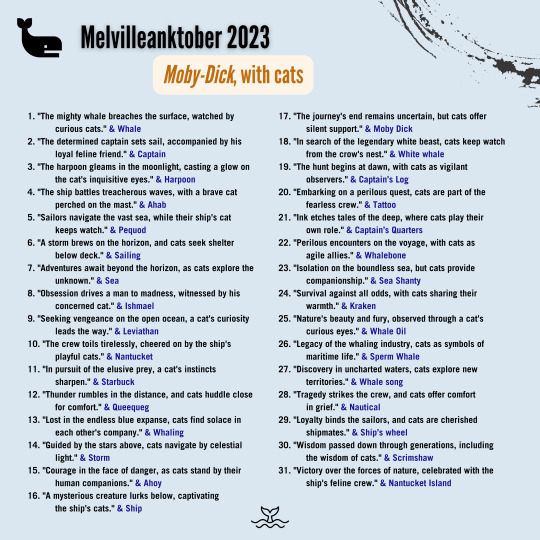
OK folks, so here I am with a goal this year. Instead of doing the Inktober, I decided to spice up the game a bit and play with the unrepresentable. I am so bad at drawing first of all, and Moby-Dick just always plays with representable/unknown/unrepresentable.
So this is a challenge and expect it to be more fun than serious. The serious part of my work is clearly elsewhere (and it is about research, not me drawing).
MELVILLEANKTOBER 2023
This is the first Melvillieanktober ever (I got the idea at the end of September). The ideas behind the prompts are:
Find words relative to Moby-Dick, anything, especially proper nouns.
Find sentences that have common elements with the novel. Mix them.
Add CATS. CATS EVERYWHERE. Expect LOTS OF CATS. Mix everything.
Basically, it is: Moby-Dick, with cats, and kind of something else around. Ladies and gents and other folks, this is the Melvilleanktober.
Here are the prompts:
"The mighty whale breaches the surface, watched by curious cats." & Whale
"The determined captain sets sail, accompanied by his loyal feline friend." & Captain
"The harpoon gleams in the moonlight, casting a glow on the cat's inquisitive eyes." & Harpoon
"The ship battles treacherous waves, with a brave cat perched on the mast." & Ahab
"Sailors navigate the vast sea, while their ship's cat keeps watch." & Pequod
"A storm brews on the horizon, and cats seek shelter below deck." & Sailing
"Adventures await beyond the horizon, as cats explore the unknown." & Sea
"Obsession drives a man to madness, witnessed by his concerned cat." & Ishmael
"Seeking vengeance on the open ocean, a cat's curiosity leads the way." & Leviathan
"The crew toils tirelessly, cheered on by the ship's playful cats." & Nantucket
"In pursuit of the elusive prey, a cat's instincts sharpen." & Starbuck
"Thunder rumbles in the distance, and cats huddle close for comfort." & Queequeg
"Lost in the endless blue expanse, cats find solace in each other's company." & Whaling
"Guided by the stars above, cats navigate by celestial light." & Storm
"Courage in the face of danger, as cats stand by their human companions." & Ahoy
"A mysterious creature lurks below, captivating the ship's cats." & Ship
"The journey's end remains uncertain, but cats offer silent support." & Moby Dick
"In search of the legendary white beast, cats keep watch from the crow's nest." & White Whale
"The hunt begins at dawn, with cats as vigilant observers." & Captain's Log
"Embarking on a perilous quest, cats are part of the fearless crew." & Tattoo
"Ink etches tales of the deep, where cats play their own role." & Captain's Quarters
"Perilous encounters on the voyage, with cats as agile allies." & Whalebone
"Isolation on the boundless sea, but cats provide companionship." & Sea Shanty
"Survival against all odds, with cats sharing their warmth." & Kraken
"Nature's beauty and fury, observed through a cat's curious eyes." & Whale Oil
"Legacy of the whaling industry, cats as symbols of maritime life." & Sperm Whale
"Discovery in uncharted waters, cats explore new territories." & Whale Song
"Tragedy strikes the crew, and cats offer comfort in grief." & Nautical
"Loyalty binds the sailors, and cats are cherished shipmates." & Ship's Wheel
"Wisdom passed down through generations, including the wisdom of cats." & Scrimshaw
"Victory over the forces of nature, celebrated with the ship's feline crew." & Nantucket Island
Yes, this is un-doable, especially with my poor drawing skills. It will be fun for sure.
Yes, I'm late for the Inktobers. Who cares?
#herman melville#art inspired by books#moby dick#inktober 2023#melvilleanktober2023#illustration#comic books
9 notes
·
View notes
Text
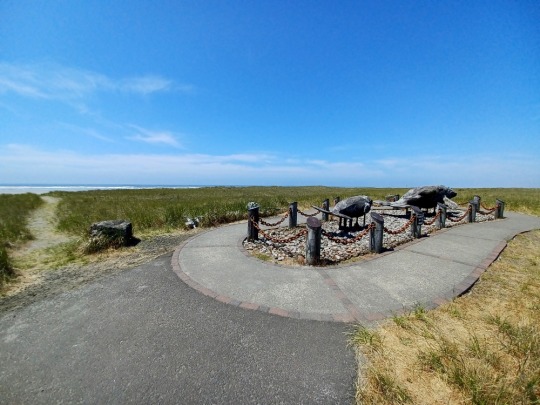
It's Tell a Friend Friday!
Please enjoy this photo I took of the Discovery Trail's gray whale skeleton and carvings in Long Beach, WA. Then tell someone you know about my work--you can reblog this post, or send it to someone you think may be interested in my natural history writing, classes, and tours. Here's where I can be found online:
Website - http://www.rebeccalexa.com
Rebecca Lexa, Naturalist Facebook Page – https://www.facebook.com/rebeccalexanaturalist
Tumblr Profile – http://rebeccathenaturalist.tumblr.com
Twitter Profile – http://www.twitter.com/rebecca_lexa
Instagram Profile – https://www.instagram.com/rebeccathenaturalist/
LinkedIn Profile – http://www.linkedin.com/in/rebeccalexanaturalist
iNaturalist Profile – https://www.inaturalist.org/people/rebeccalexa
Finally, if you like what I’m doing here, you can buy me a “coffee” at http://ko-fi.com/rebeccathenaturalist
#whales#gray whales#whale skeleton#vulture culture#bones#animal bones#dead things#ocean#beach#Washington#PNW#Pacific Northwest
19 notes
·
View notes
Text
Creeping Ambition
CW: Dehumanization, captivity, restraints, emotional manipulation, mad science, drugging, delirium/hallucinations, noncon touch (nonsexual), torture
For @whumptober 2022, day 1: adverse effects / “this wasn’t supposed to happen” and day 23: tied to a table
Signs of the Sea Masterlist
-
The following was attached to an email sent to Austin Howard, CEO of Howard Reston Health, by Dr. Rachel Lachlan
RECORDING 90
DAY 076 SINCE SUBJECT WAS ACQUIRED
There is a soft, slight hiss as the recording begins. Barely perceptible, it seems to grow slightly louder as the recording continues.
A woman’s voice speaks.
“This is Dr. Rachel Lachlan, recording for the purposes of later transcription, with Bahram Anvari assisting. Subject is adolescent mer and is a rare example of a young adult male. Today’s examinations are more practical than usual, I must admit. We’re not looking for any big breakthroughs in knowledge today.”
A male voice with traces of a long-ago English accent still clinging to the edges of each syllable speaks next. “We’re not?”
“No, Bahram.” The rattling of metal, sound of wheels rolling along a floor. There is a splash of water, the sound of it slopping against the sides of a tall plastic tub. A soft chirp and click becomes audible, questioning. While the young man murmurs a soothing nonsense reply, the woman ignores it. There is light beeping, four in quick succession, then the sound of a mechanism unlocking. Creaking as a door swings open. The rattling of wheels begins again. “Today is really more about observation, looking for the smaller details that our more difficult work may lead to us missing.”
“So we’re just going to… watch him?”
Thump.
“In a manner of speaking, yes. Please move the mer onto the examination table.”
There is a brief pause, and then Bahram Anvari speaks in a softer, sweeter voice. “Okay, here we go. Yeah, you know how to do this by now, huh? One… two… three… up!”
Harder thumps, and the sound of Bahram Anvari’s heavy breathing from exertion. The mer chirps, a sound that manages at once to be both plaintive and attempting cheerful.
“There we go,” Bahram says. “Good, good job.”
“It doesn’t understand English or ASL.” Dr. Lachlan’s voice is dry and disdainful. “I don’t know why you bother with all that nonsense. It isn’t a person, Bahram.”
“With all due respect, Dr. Lachlan, anatomical studies of recovered specimens have shown that they have very similar neurological structures to our own.” Bahram’s voice might tighten slightly - it’s difficult to tell by recording alone. “There’s no reason to believe he can’t learn a language as easily as we do.”
“Bahram.” Dr. Lachlan’s sigh is audible in the recording. “What have I told you about over-humanizing the test subjects? He is not human.”
“Their scientific name is Homo haffru sirenia! They’re part of our family tree!”
“I have some disagreements about that classification, to be frank. With the gills and being fully aquatic in their natural lives, I would really call them Cetacea, class them alongside whales, not Simiiformes like us.”
“You’d be wrong if you did. Anyone who did would be wrong. He is clearly a branch of humanity-”
There is a pause. “Bahram. Are you questioning my understanding of taxonomy as it applies to a marine subject I have far more knowledge of and experience with than you do?”
“... I thought you said you’d never worked with them personally before this.”
There is another, much longer pause. “Bahram-”
“Did you? Did you work with mer before, in person? Not just observational?”
“That isn’t relevant to the current-”
“Zer nazan! Of course it’s relevant-”
“Bahram! I can dismiss you from this project if you would prefer, right now, and you may pack your things and go.”
A pause. “What?”
“I can continue onward on my own or hire someone new, if you would prefer. Or you can stop blithering and help me provide mankind with discoveries that could get both of us quite wealthy and well-known.”
“I don’t care about money, Dr. Lachlan. And I don’t care about getting my name in any publications, or-”
“But you value your parents’ regard, don’t you? I imagine that after you have already left your university education somewhat… ignominiously, that losing your first and only job immediately afterward would disappoint them further.”
Silence, broken only by the questioning clicks from the mer, which neither human seems to respond to. Bahram Anvari is the first one to speak again. “I… I’m sorry, Dr. Lachlan. I didn’t sleep well last night, and I’ve been having some trouble… with everything.”
“I can see that.” Dr. Lachlan’s reply is clipped, irritated but no longer angry. “Does this mean I should be concerned about a repeat of your prior illness? I offered you an option that allowed you to gain the experience you need without having to attend classes, and even agreed to speak to Dr. Evans about forgiving some of your incompletes in order to allow you to return to finish your degree-”
“I know, Dr. Lachlan, and I’m grateful… it’s just-”
“Should I rescind that offer, Bahram? You know as well as I it will be quite impossible for you to gain employment within your chosen field without that bit of paper proving your capabilities.”
“No! No, I’m… I’ll be fine. I’m fine, doctor. I’m just… I’ll try to get better sleep. That usually helps a lot.”
“I will hold you to that. Now… let’s get him strapped down.”
Bahram’s voice has a note of reluctance and uncertainty. “... yes, doctor.”
For approximately sixty-seven seconds, the only sounds are the breathing of the two humans and the mer, and the sound of metal buckles clinking as the mer is strapped by tail and wrists against the table. The mer whistles in distress, but beyond some low shushing noises from Bahram, neither speaks to him.
Dr. Rachel Lachlan’s heels click on the tile floor as she moves away from the recording device.
“Dr. Lachlan? What are you doing?” Bahram Anvari moves the microphone closer to the mer, and there is the sound of scraping and a brief burst of feedback and audio noise.
Dr. Lachlan’s reply is faded and distant. A cabinet door opens and closes sharply. Water runs, and then shuts off again shortly afterward. “I’m prepping our observational study, Bahram. We’ll be observing the effects of a specific kind of sedative being developed for use in merkind.”
“For use in… why would we need that? I thought you said you didn’t plan to take any more-”
“I don’t plan to do anything, Bahram. My employer, however, may wish to gain further subjects in the future. And we want this to be as humane a process as we can make it. Now, you mentioned his right arm is no longer useful for syringe injection?”
“... right. He’s… his veins are totally tapped out on that side. We’re giving him too much-”
“Nonsense. We’ll try the left today, then.”
The mer whistles again. This time Bahram speaks to him directly. “It’s all right, just turn your… right. Just like that. Give blood, okay?”
“It knows that command, hm?” Dr. Lachlan laughs, a little wryly. “Like a dog learning what ‘roll over’ means.”
“Or a child," Bahram says quietly, "learning how to ask to be held.”
Dr. Lachlan makes a sound of disgust, but doesn’t reprimand him this time. Instead, there is a brief silence before the mer whimpers and Bahram shushes him again.
“Bahram, what are you doing?”
“He likes-... it helps him feel better,” Bahram replies, a little defensively. “He’s scared of needles - can’t imagine why - but if one of us is there with a hand on his head, it helps him.”
“You’re a lost cause, Anvari. Imagine how little we would know about the world if all our researchers had your bleeding heart.”
“We might know just as much, and have found it out in ways that didn’t involve terror.”
“Nonsense. And... there we go. It should only take a few minutes to take effect. Let’s clean up while we wait.”
“Yes, doctor. All right, buddy, you took the needle really well. Now-... here, yes.” Brief silence. “Good? See?”
“... are you signing to it again, Bahram?”
“Yes. He really does know a few signs, and-”
“Hmph. Hopeless indeed. Come here and help me.”
For approximately five minutes and forty-two seconds, no sound is heard beyond breathing, Dr. Lachlan’s quiet commands, and Bahram’s soft, deferential answers. Then, the mer whimpers and whistles, and the two humans go quiet.
Rattling and thumps. Distressed clicks and whistles raise in volume and pitch. Audio briefly drops out as the mer’s keening is too loud and close and the microphone fails to fully record it and instead records a moment of static.
Keening again. Table rattling.
“What is he doing? Dr. Lachlan, why is he doing that?”
“It’s thrashing, Bahram.”
“No, I see that, but… why is he-... hey, it’s okay, it’s-... ow!”
“Don’t get so close to it!”
“He bit me!”
“Shocking. You put your hand next to its mouth and it bit you. A wild surprise.”
“Dr. Lachlan… What’s wrong with him?!”
INCLUDED: FIGURE 3.2, PHOTO OF MER TAKEN FROM LEFT SIDE
“Hm. Well. That wasn’t supposed to happen.” Dr. Lachlan’s voice is muffled, as the mer continues to wail, rattling and thumping against the table as he thrashes. The keens become shrieking, screeches that overwhelm the recording with feedback again and again.
SUBECT STRAPPED TO TABLE. SHOULDER BLADES AND TAIL AGAINST METAL. BACK ARCHED. DRIED AND WET SALTWATER ON FACE. MOUTH WIDE OPEN, FANGS GLEAM IN THE LIGHT PLACED CLOSE TO FACE.
EYES WIDE.
SEE SUPPORTIVE DOCUMENTATION RECORDING INCREASED HEART RATE.
Primary audio file unusable for reference purposes for period of sixty-six seconds due to this loss of fidelity.
SEE INCLUDED AUDIO FILE 62 FOR MORE ACCURATE RECORDING OF MER DISTRESS SOUNDS WHEN NEGATIVE PHYSICAL STIMULI IS APPLIED.
INCLUDED AUDIO FILE 62 FROM RECORDS: MER SCREAMING.
“What was supposed to happen? That wasn’t a sedative, was it, Dr. Lachlan? We’ve used sedatives on him before and this has never happened, so what did you give him and what did you think would happen when you did?”
“Bahram-... I would watch your tone-”
“What was it?!”
“... a deliriant.”
The pause that follows is not a silence at all. The mer continues to shriek in the background, audio crackling in and out, in and out.
“You gave him something to make him hallucinate?!”
“My employer-”
The sound of tearing fabric overtakes all over noise.
“... wait, what’s that sound?”
Crashing, sound of metal against tile, glass breaking, more fabric tearing, and above it all, the mer’s high-pitched, keening screams.
“Shit! Come here, buddy, it’s okay, come here-... oh shit-.. Stop, stop trying-... my ears, that hurts so bad, stop it-"
“The subject,” Dr. Lachlan speaks over the noise, voice strained with effort, nearly shouting herself, “has torn the restraints on the right side and from its tail and is now off the table and on the ground. It has destroyed laboratory equipment, including the restraints… also a variety of compounds intended for experimental use… several broken syringes, its travel tank…”
“Here, let me get that for you, just calm down, calm down, here we go… here we go-...”
“Bahram Anvari has undone the subject’s last remaining restraint from around its wrist-”
“He’s terrified! Whatever you gave him is hurting him!”
“It’s not hurting him… it… it just may be causing some sensory hallucinations-”
“No.” Bahram’s voice is firm. “He can see his pod-... his family. He can see them being harpooned like he was! He can see-... see their blood in the water-... he thinks he’s in the water. He’s trying to get to them to help! Here, here buddy, it’s okay, you’re just in the lab with me…”
INCLUDED: FIGURE 3.3. STILL IMAGE FROM SECURITY CAMERA LOCATED IN PLACEMENT SEVEN WITHIN LAB.
PHOTO OF BAHRAM ANVARI, SEATED. ANVARI HOLDS MER SUBJECT, WHO IS STILL APPEARING TO VOCALIZE. MER SUBJECT IS BLURRY DUE TO CONTINUED VOLATILE MOVEMENTS. WATER IS VISIBLE AROUND TILE FLOOR DUE TO OVERTURNED TRAVEL TANK.
ALSO VISIBLE: GLASS SHARDS, SYRINGES, TORN NYLON, OVERTURNED METAL TABLE, AND DR. RACHEL LACHLAN STANDING NEAR SINK.
“How can you know?” Dr. Rachel Lachlan’s voice remains calm despite noise and movement. “How can you know that’s what it sees?”
“I just-... I just know!”
There is whispering, from Bahram Anvari, which cannot be understood on the audio recording. After approximately seven seconds of further vocalizations, the mer goes quiet, and then whistles exactly once, high-pitched for one second, then three shorter, sharper, lower notes.
“I know,” Bahram says, voice soft and gentle. “I know. We’re just here in the lab. It’s just us.”
“Bhhh… Bhhhh-rmmm.” The mer appears to be attempting to say Bahram Anvari’s name. This transcriber did their best to accurately reflect the pronunciation of syllables. “Bhhh-rmmm, hhhh-puh…”
“I’m right here. I’m right here. It’s just us, it’s just the lab. Your pod is still out there, they’re all right, it’s just us here… just us.”
“Bhh-rmmmm… mah-... mah-”
“I know, I’m so sorry, she’s not here.”
“Mah-”
“I know.”
A pause.
FIGURES 3.4, 3.5, AND 3.6. STILL FROM SECURITY CAMERA LOCATED OVER ENTRANCE INTO LABORATORY. PHOTO SHOWS JUVENILE MER HELD BY BAHRAM ANVARI.
FIRST PHOTO SHOWS MER WITH PALMS FACING SELF, CLAWS SPREAD, ONE HAND LOCATED THREE INCHES ABOVE THE OTHER. ONE HAND IS OVER LUNG AREA SLIGHTLY TO THE LEFT SIDE, ONE OVER UPPER ABDOMEN ON RIGHT.
SECOND PHOTO SHOWS SAME IMAGE, BUT NOW MER’S HANDS HAVE SHIFTED INWARD, ONE DIRECTLY ABOVE THE OTHER, CLAWS SPREAD, CENTRAL POSITION IN FRONT OF TORSO.
THIRD PHOTO SHOWS MER’S HANDS HAVE RETURNED TO THEIR ORIGINAL POSITION, CLAWS SPREAD, ONE SLIGHTLY TO RIGHT AND THE OTHER SLIGHTLY TO LEFT.
“I know, I know you are, I know… It’ll stop after a while, I promise…”
“Bahram.” Dr. Lachlan sounds genuinely unsettled for the first time. “What did it just do?”
“He said I’m afraid. Miah and I have taught him some ASL, I told you, Dr. Lachlan, he isn’t what you keep saying he is, he’s thinking all the time. He’s learning. He’s-... he’s just a kid-”
“It is a juvenile mer-”
“He’s a child. A humanoid child who has been abducted, and he’s scared and in pain and it’s… I’m part of it. It’s my fault. He misses them so much… He thinks about his mother, you know. All the time. It’s okay… it’s okay. I think about my maman, too…”
“It thinks about its parent?”
“Dr. Lachlan…”
“Fine. Its mother.”
“Yes. He’s… he’s barely more than a baby.”
“This juvenile is adolescent. It’s within two years of entering its first mating cycle!”
“Yeah, and so was I when I was sixteen, but I still asked for Maman when I was in a car accident! He wants his mom. What kid have you met who didn’t want someone when he’s scared and alone?”
“I… don’t interact often with children.”
“Yeah. I can tell.”
Dr. Lachlan’s reply is clipped. “... I can see that you won’t be reasonable about the current situation. I need to record my observations for my employer’s benefit. I think we’ll cut our experiment short for today. When you can, return him to his tank and clean up this mess.”
“Yes, of course, doctor, but… that’s it? That’s all you needed?”
“... yes. I’ve gotten what my employer needs to know.”
Dr. Lachlan’s heels crunch on broken glass and plastic as she walks briskly out the door and closes it behind her with a sharp click.
The audio recording continues on for some time, the only sounds those of Bahram Anvari speaking to the mer, and the mer’s chirping, whistling, and clicking responses. After approximately one hour and seven minutes, Bahram Anvari begins to clean up the side of the laboratory closest to the door.
The sound of a secondary travel tank being wheeled in, one squeaky wheel differentiating it from the original, now broken one.
“Oh, right. The audio. Let me turn this over, bud, and then we can get you back home-... back into the tank, anyway. I can get the glass out of your tail in a second. Oh, man, you are so heavy…”
One final whistle from the mer.
“Yeah… you’re welcome. I hope this doesn’t come back to bite me in the ass later.”
RECORDING ENDS.
-
Copy of email sent to Austin Howard:
BODY:
FROM: [email protected]
SUBJECT: Breakthrough!
Mr. Howard,
I thought you might find something of value in this transcribed recording of my latest session with the juvenile mer subject. I have attached images and audio files that support the transcription, which I believe will be of immense benefit.
Frankly, this justifies our entire mission.
As you can see, the juvenile is learning American Sign Language due to repeated contact with my assistant and our friend’s daughter. While that is fascinating, there is something far more important in this recording.
Note, if you will, that Bahram Anvari appears to have some understanding as to the mer’s thoughts and access to specifics as to its reasoning that he shouldn’t.
He won’t tell me how he gained this knowledge, but I think our hunch is correct.
The mer are telepathic, Austin!
And ours… is talking to Bahram.
Yours,
-
Dr. Rachel Lachlan, D.Sc
Head of Applied Experimental Research
Howard Reston Health
(555) 683-4310
“Every great advance in science has issued from a new audacity of imagination.”
John Dewey
BODY:
FROM: [email protected]
SUBJECT: Re: Breakthrough!
Dr. Lachlan,
I was excited to review the transcript of your session. Now, having listened to it and looked over your notes, I’m downright goddamn thrilled.
My secretary will be giving you a call in about twenty minutes. I intend to make a visit to your laboratory and see the juvenile in person. Schedule a particularly strenuous, frightening, or painful experiment for that day, and ensure Bahram Anvari assists you.
Let’s see what this little fish can do.
Thank you as always for your invaluable contributions,
-
Austin Howard
CEO, Howard Reston Health
(555) 334 - 2309
“Ambition can creep as well as soar.”
Edmund Burke
@astrobly @burtlederp @finder-of-rings @thefancydoughnut @whumptywhumpdump @boxboysandotherwhump @yet-another-heathen @fanmanga1357-blog @justabitofwhump @crystalrainwing @keeper-of-all-the-random-things @orchidscript @whump-tr0pes @hackles-up plus @whumpworldld for whumptober tag list
#whump#whumptober 2022#whumptober2022#no.1#adverse effects#drugging tw#hallucinations tw#hallucination tw#drugged whumpee#signs of the sea#inhuman whumpee#mer whump#mer whumpee#mad scientist#reluctant whumper#caretaker and whumpee#noncon touch#noncon touching#torture#torture tw#restrained#unconventional restraints#science whump#there's a Fun Fact in the name of the recipient of the email...
101 notes
·
View notes
Text
Fic Rec Friday
Thank you for the tag @firstprince-history-huh and @reyesstrand ❤️
Rules: tag the fic that made you cry / feel all the feelings and describe why it's so good. Then, tag some fellow associates to see what everyone else is reading.
Tbh...I'm not much of an outward crier despite my constant use of the 😭😭😭 emoji (although highly accurate as to how I feel on the inside). Anyhoo, these three (sorry) fics were powerful to the point of bringing actual tears to my eyes. The first one, I only read today! And I'm still feeling pretty raw over it!:
Anger has told me her real name is grief by @alrightbuckaroo is a 4x17 and 4x18 coda, which has a moment in it with a particular object with a particular significant __something__ on it...I really don't want to spoil anything but my eyeballs really had a frazzling moment. It's beautiful and soft and so well handled.
The Kind You Can't Get Away From by @heartstringsduet - I went absolutely bonkers reading this. It's one of my favourite fics ever. It explores TK's history as a lizard-lover, and with addiction, and how nature connects with his recovery. Again I don't want to spoil anything but I will say that the words whale and wail being homophones seems apt...
Under the Surface by @paperstorm - a Missing Moments fic for 2x07. Again I do not want to spoil anything for those who haven't read it - but there is a point where TK makes a discovery..... I found it just so poignant and innocent that I was aching and had to stop reading for a sec. One of my faves in the whole series. (Which was also my fic rec last week. But that's how good it is!)
I think I'm coming to this a little bit late but tagging @never-blooms @irispurpurea @lightningboltreader @thisbuildinghasfeelings @strandnreyes @danieljradcliffe @howlingsaturn @ladytessa74 @bonheur-cafe @chicgeekgirl89 @chaotictarlos @cold-blooded-jelly-doughnut @taralaurel @goodways if there's anything you want to share/haven't already! ❤️
21 notes
·
View notes